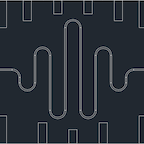Image

Reservoir engineering in circuit quantum electrodynamics
Publication Year
2016
Type
Thesis
Abstract
Superconducting circuits have become an ideal platform to implement prototypi- cal quantum computing ideas and to study nonequilibrium quantum dynamics. This thesis covers research topics conducted in both subfields. Fast and reliable readout of volatile quantum states is one of the key requirements to build a universal quantum computer. In the first part, we utilize a number of techniques, ranging from a low noise amplifier to an on-chip stepped-impedance Purcell filter, to improve superconducting qubits readout fidelity. Interestingly, full quantum theory of SIPF requires the understanding of strong coupling quantum electrodynamics near a photonic band-gap. This problem, intimately tied to quantum impurity problems in condensed matter physics, has never been studied experimentally prior to the development of superconducting circuits. This realization then leads to the second part, the study of atom-light interaction in structured vacuum. The word ‘structured’ means the spectral function of the vacuum is drastically different from that of free space. We directly couple a transmon qubit to a microwave photonic crystal and discuss the concepts of photon bound states and quantum dissipative engineering in such a system. Following this research direction, quantum electrodynamics in a driven multimode cavity, another form of structured vacuum, is also investigated both experimentally and theoretically. The most intriguing phenomenon is the multimode ultranarrow resonance fluorescence, attributed to correlated light emission.
Thesis Type
PhD
University
PhD thesis

